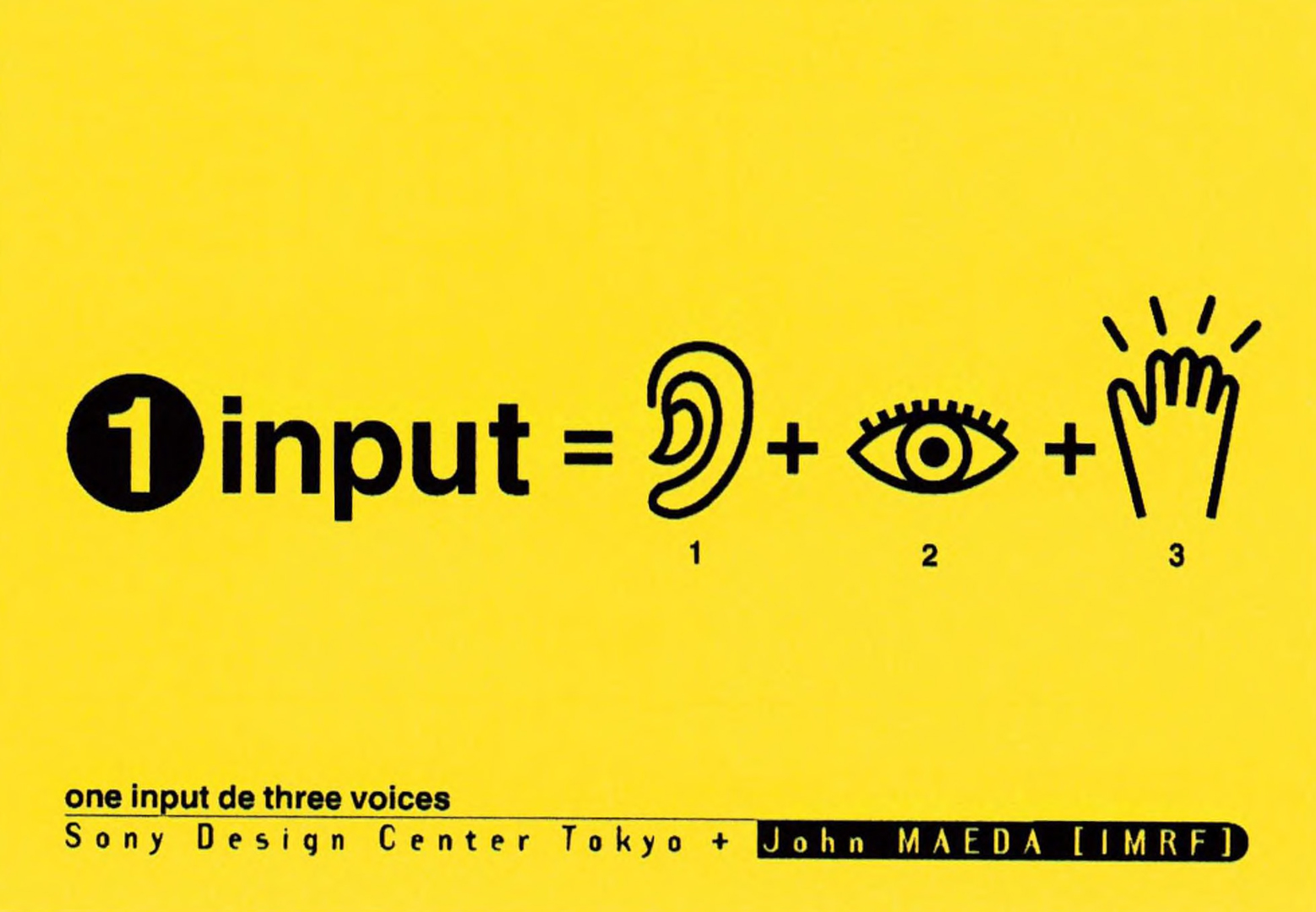“One Input De Three Voices” by Sony Corporation and International Media Research Foundation
Conference:
Experience Type(s):
Title:
- One Input De Three Voices
Program Title:
- Interactive Communities
Organizer(s)/Presenter(s):
Collaborator(s):
- Yumie Sonoda
- Jun-ichi Nagahara
- Makoto Niijima
- Haruo Oba
- Hiroaki Nakano
- Tatsushi Nashida
- Kunihito Sawai
- Yoshiaki Kumagai
- Masami Hirata
- John Maeda
- Kazuo Ohno
Project Affiliation:
- Sony Corporation and International Media Research Foundation
Description:
The process of computer interaction can be identified by the fact that there are two channels of input (keyboard and mouse) and two channels of output (monitor and speaker) forming a canonical interactive loop. Interactive computer graphics research enriches this standard, two-input/two-output loop by increasing the number of channels and/or by augmenting existing channels with technologies such as 3D input devices and eye-tracking hardware used in conjunction with haptic or aural displays.
Many interactive artists have already begun to integrate these advanced technologies in their work, but the interactive media designer is forced to work strictly within the limitations of the standard two- input/two-output model due to the economics of working for a consumer audience. As a result, interactive media design has focused on the creation of nouveau pop-up books without taking full advantage of the computer’s expressive power.
In One Input De Three Voices, graphic and industrial designers collaborate to cast aside the conventional interactive computing system to present a highly simplified set of three one-input/one-output interactive systems. The common input shared by all three systems is sound (microphone input), which was selected for its ease of use. This sound input is manifested as three separate interactive experiences (visual, aural, and tactile). All respond in real time at a monumental scale. Each of these experiences is realized using off-the-shelf technology to underline its proximity to the consumer market. This fundamentalist approach re-evaluates and reorganizes the current philosophies of interactive design and highlights the future role of the interactive designer.





